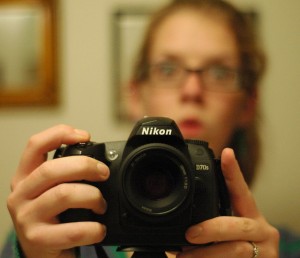
This is the latest installment of Dear WordCount, an advice column that answers your questions about writing, blogging and running a freelance business.
Dear WordCount:
Where do most writers get photos to accompany their posts? Do most buy a subscription at a stock photo service, and are there any do’s and don’ts to know about those services? Do writers spend a lot of time looking for and choosing the right photo? Some of the sites I’ve found offer so many photos, I can see this potentially becoming a time consuming step.
Thanks,
Debbie
Dear Debbie:
Adding photos to blog posts is smart, because they make your posts look more professional, because readers like them, and because Google notices them, which helps your posts appear higher in search engine results.
Creative Commons
My standard fall-back source for photos is Creative Commons. It’s a clearinghouse of content, including images, that the license holders make available for other people to use online with limited or no restrictions. On the Creative Commons site, use a search window to type in keywords that describe the image you’re looking for. The site’s internal search engine will look through images from Google and Flickr and videos on blip.tv. If you see something in the search results that you’d like to use, click through to read what licensing rights the copyright holder is making available. Sometimes all they ask is that you identify them as the photographer when you run the photo.
Creative Commons is a helpful resource but doesn’t always have the images I’m looking for, so I’m constantly on the hunt for images elsewhere.
istockphoto
As a member of the BlogHer ad network, I used to have access to free photos and other images from a service called PicApps that had a deal worked out with BlogHer. However, PicApps ended its stock photo service in March, so I’m back on the hunt.
Other bloggers have good things to say about istockphoto.com, an online stock photo company that sells images for as little as 95 cents (based on buying mulitple “credits” toward photo images).
Some established bloggers argue that if you’re serious about blogging, you need to start paying for professional looking photos. One of them is Linda Formicelli, a freelance writer who blogs at The Renegade Writer, and discussed photos in a recent post debunking common blogging advice. “If you’re one of the sixty bazillion bloggers looking to monetize your blog, would it hurt to drop a few dollars to make your posts look attractive and professional?” she asks.
DIY
There’s another option: taking your own photos. You don’t need a fancy digital camera to take pictures. If you’ve got a smartphone, just point and shoot. You can post the photo to Flickr, Facebook or Twitpic, then copy and paste it into a blog post, or use WordPress’ QuickPress feature to put it directly into your blog.
What do you use for photos for blog posts?
A huge thank you, Michelle! This is quite helpful, add this to the many great tips I’ve learned from your site!
Hi Michelle – I can’t remember if I mentioned this during the blogathon, but i get a lot of my pics from RGBstock.com. They are all free, and it’s my go-to besides creative commons. 🙂 Happy Friday!
I would like to add a location. I use it often. It’s http://www.sxc.hu/
Thank you for these great suggestions. I had vaguely heard of creative commons before- so it will be good for me to go and check it out (now that you have explained it a bit more).
I am a photographer as well as a writer, so use my own shots for my blog. at times when I am writing posts for other sites, though, it makes more sense either from a subject matter or rights standpoint to look elsewhere, so thanks for these ideas.
care to offer suggestions for those of us who use our own photos and are not making them freely available to others to use? thus far I include a copyright notice in the html tag, and usually a line which says ‘these photographs are copyrighted. thank you for respecting this.’
Hi Michelle,
Good post, thanks for raising this issue. Here are some other resources, where I often find extremely high quality images that are just as good as stock image sites, if not better:
* Flickr’s Advanced Search (http://www.flickr.com/search/advanced) lets you search only within photos with Creative Commons licenses. This means that the photographers have given permission for others to use their work, often requiring only a credit and a link back. The option “Only search within Creative Commons-licensed content” needs to be checked off at the bottom of the page before clicking “Search.”
* Wylio (http://wylio.com/) is a service that searches only Creative Commons licensed images on Flickr and provides embed codes. They make it easy to adjust the size of the image, which is nice.
* Wikimedia Commons (http://commons.wikimedia.org/wiki/Main_Page) is a collection of freely usable media files and includes photos.
* As mentioned above, stock.xchng (http://www.sxc.hu/) allows photographers to upload their photos for use by others. Usually the only restriction is that you need to rate the image and leave a comment and let the owner know what you did with it. Check each photo’s “availability” notes for details. If you create an account, you can even set up “lightboxes” that let you save images for later.
* FreeDigitalPhotos.net (http://www.freedigitalphotos.net/) requires attribution and a link back.
Skye:
Thanks for the tremendous addition to my list. I especially appreciate the tips on using Creative Commons’ advance search. It’s nice to know so many resources are available.
Michelle